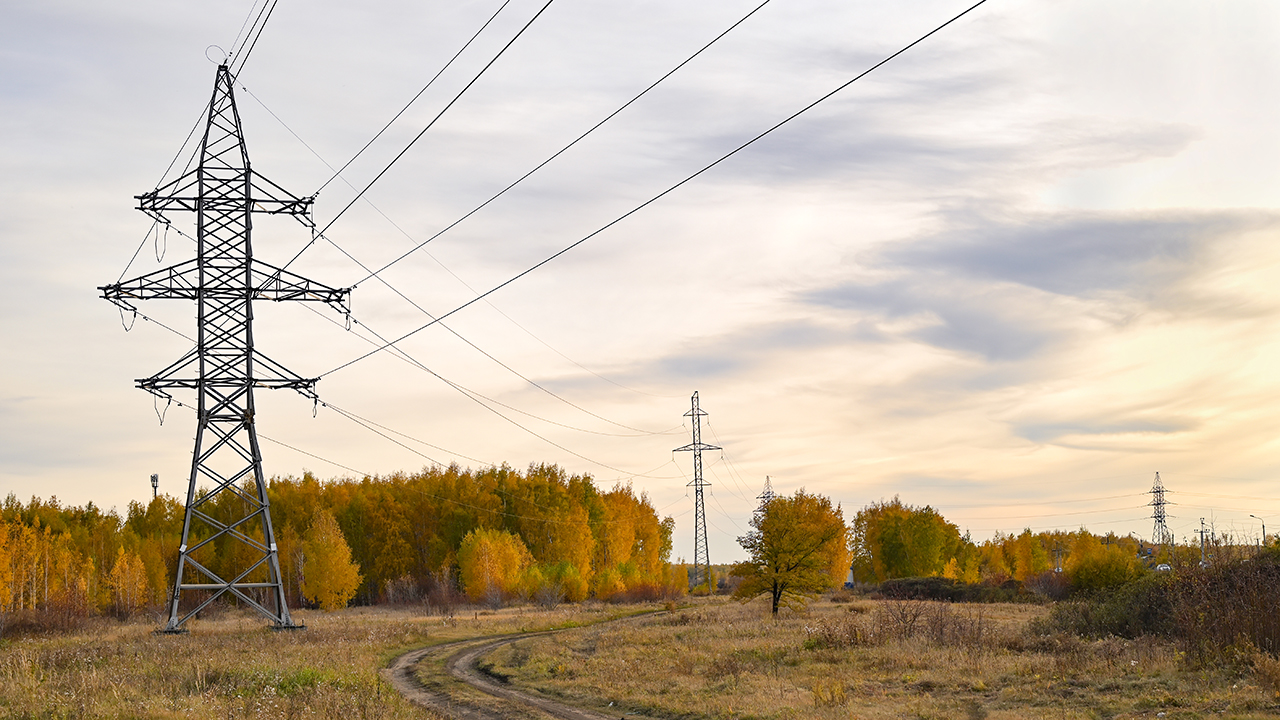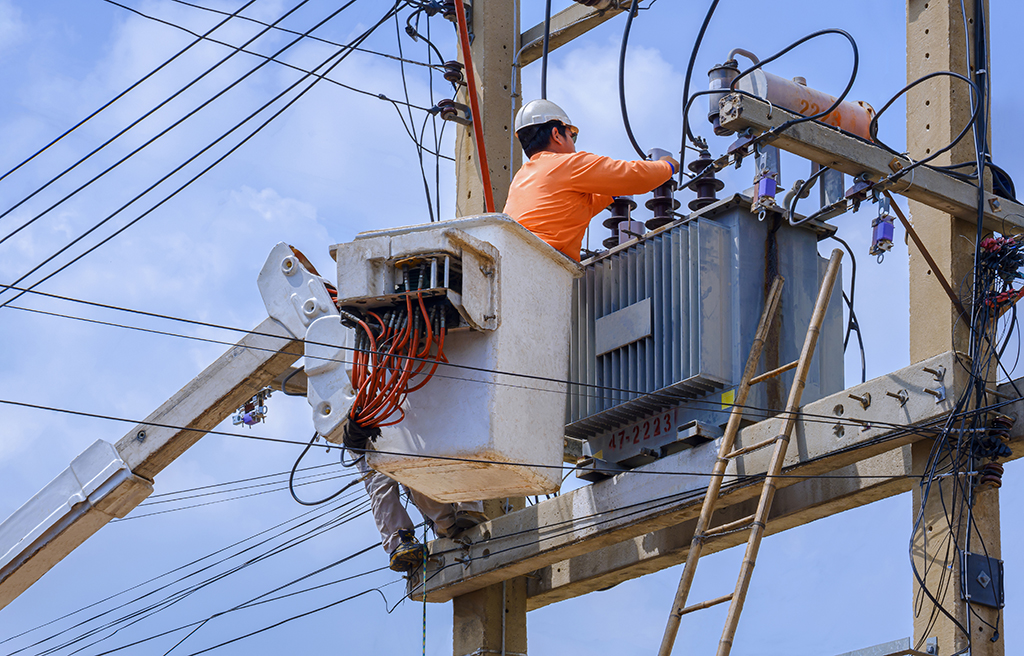
At Fresh Energy, we are committed to ensuring Minnesota and the Midwest have a future-proof electric grid that can handle extreme weather and move the higher volumes of electricity that our lives demand. We even have a team of policy experts dedicated specifically to electric transmission-related work! But why does transmission matter so much? If you need a refresher on the grid and transmission, check out this blog post!
Because the energy transition is underway! The speed of the energy transition hinges on a future-proof transmission system. We are making great strides toward a cleaner future through our energy sources and our usage. Every day, we are generating more and more electricity from renewable sources like wind and solar, while at the same time we are transitioning our lives (including how we get around, how we heat and cool our homes, how we cook our food, and beyond) off of fossil fuel and onto that clean electricity. However, without more transmission, even with all the great work we are doing, there are still hours of the day where your electricity comes from fossil fuels simply because those clean electrons can’t get to your home. More transmission, more clean, cheap energy for you – it’s that simple!
Wildfires, polar vortexes and poor air quality, oh my! While we are taking these positive steps, climate change continues to impose increasingly devastating effects on our communities. We need to employ increasingly thoughtful strategies to combat these climate effects. In reality, it will be a portfolio of solutions—additional renewable energy systems (both large and small), energy storage, new and emerging carbon-free electricity technologies, and, as soon as possible, more transmission lines.
Transmission facilitates the movement of electricity similarly to the way highways facilitate the movement of your vehicle. If you have ever driven across the state, or perhaps from Minnesota to North Dakota or to Iowa, you are essentially an electron on a transmission line. Without a highway, you’d be confined to your hometown or the roads out of town would be so congested you would cancel the trip. And what happens at rush hour? Car traffic can come to a stop, and this same thing happens with electrons on transmission lines, something the energy industry also calls “congestion.”
This scenario is very similar to the issues we are currently facing in our transmission system. As more renewable energy is built to replace fossil-based power plants, the electrons are stuck in their hometown or on clogged freeways due to a lack of transmission capacity. This becomes increasingly dangerous in severe weather events (like extreme heat or cold) when demand for electricity is highest. When we or our neighboring states are caught out in the cold due to an unexpected event, increased regional transmission capacity could create the “highway” to receive/send emergency electricity from neighboring states or regions to keep the cold out.
A bit of history
Fossil-based power plants generate a significant amount of heat as one of their waste products when producing electricity. Because of this, these “thermal” plants (as they are known in industry jargon) are often located next to sources of water that serve as coolant. Additionally, fossil-based power plants tend to be located close to cities and factories so that they are closer to their energy demand, but this also puts communities closer to the pollution that these plants emit.
Over time, power companies realized that they could build fewer power plants if they connected with their neighbors—there may be times when their customers need a lot of power, but their neighbor’s customers don’t. Early power companies realized that high voltage transmission to connect with their neighbors was cheaper than building more power plants, and these connections eventually grew so vast that they created three distinct regional power grids in the lower 48 states: one in the East, one in the West, and one in Texas.

However, when renewables came along, they didn’t fit the same locational patterns as old fossil-based power plants. Because renewables don’t generate heat, they don’t need to be located next to large sources of water. And the sunniest and windiest places aren’t necessarily close to cities — they are often quite far away!
In the early days of renewable development, this wasn’t such a big deal. Just find places along those old power lines that were either sunny or windy, and you found where you could build your solar or wind plant. Problem solved! But eventually those easy locations ran out or got full enough that there wasn’t room for more wind and solar to connect, so wind and solar companies had to find locations further and further away from the grid. Essentially, too much traffic was present and electrons from renewables would be stuck in congestion.
Today, grid operators across the country have recognized that we need more transmission—much more transmission—to connect all these sources of wind and sun to the grid. And while wind and solar plants have different needs than fossil-based power plants, one thing remains the same: sharing resources with our neighbors via transmission is still much cheaper than trying to go it alone.
Transmission drives down costs, increases reliability, and enables planning
Transmission is a long-term investment with short-term benefits
There’s an old adage: “sometimes one needs to spend money to make money.” Transmission is quite similar. MISO (Midcontinent Independent System Operator), our regional grid operator, recently approved a $10.3 billion investment in new high-voltage transmission across the Upper Midwest, part of which will be in Minnesota, and which is currently being reviewed at the Minnesota Public Utilities Commission. $10.3 billion sounds like a ton of money (it is!), but that same $10.3 billion investment is estimated to achieve between $23-52 billion in net savings. So, while one might see the cost of transmission on the transmission rider of their electric bill go up (this is an item on the electric bill in addition to the base rate), they’ll also see the actual cost of electricity go down by an even greater amount than it otherwise would have. So, even though transmission is expensive, it will result in lower electricity bills than without it.
Why? It’s because building transmission lets us access more solar and wind, which are just that much cheaper than coal and gas power plants. While coal and gas plants rely on fossil fuels, which must be continually drilled, mined, shipped, stored, and purchased, the only “fuel” that wind and solar rely on comes directly from the sky. This is why wind and solar power are cheaper than coal and gas. But the only way that price savings can reach consumers is if we build the transmission needed to bring that power to them.
Reliability is more crucial than ever
Changing our electricity supply from fossil to wind and sun also means that our electricity supply is directly connected to the weather. Therefore, to combat the increasing frequency of severe weather events, we need a grid that is bigger than the local or regional weather. This means we need to increase the connectivity between regions so they can be each other’s backup in the event of extreme weather.
The good news about this approach is that severe weather events are largely regional. A bomb cyclone in the Northeast is probably not affecting Minnesota too severely, whereas a polar vortex freezing out Minnesota is probably not producing snow in the Southwest. By investing in transmission, we can connect these regions and move electricity where it needs to be, even in an emergency.
For context, during the February 2021 Winter Storm that hammered the Midwest and Texas, the Midwest was able to escape from the worst outcomes while Texas was devastated. The reason for this difference is that Texas is not connected to its neighbors, while the rest of the Midwest is. So, during this storm, power generators on the east coast were able to send electricity all the way to the Great Plains and deep South. But Texas had no access to that, and the results there were tragic. Had there been more transmission in place, it would have saved billions of dollars, dramatically increased reliability, and most importantly, saved many lives. For each additional gigawatt of transmission ties between Texas and the Southeast that could have been in place, $1 billion could have been saved, and most importantly, more Texans would have had reliable heat in their homes.
In the same way, renewable resources like solar and wind are more prevalent in some regions (hello, Southwest Minnesota!), times of day, or seasons, than others. Developing a system that can foster reliability and capture all the possible benefits from these assets is paramount. In some cases, the easiest solution will be to capture and store the electricity in batteries to use it later. In other cases, it is necessary to move the electricity to the communities that need it.

From Minnesota to Missouri to Maine, transmission affects us all
Some might ask, why can’t we just build all the solar and wind we need right in our backyard? Why do we need transmission to bring it from far away? The answer to this isn’t the result of an either/or situation. It’s actually a yes/and proposition. If we build more wind and solar (especially solar) close to or on top of our homes and businesses, we conceivably will need less wind and solar that is far away. But such a local strategy still relies on increased transmission.
In a greatly increased renewable world, there will be times when certain communities won’t have enough wind or sun to power their system, and even their batteries may struggle to keep up from time to time. Instead of building even more local battery storage systems, it will be cheaper and more reliable to connect with neighbors—just like it was with the old thermal plants. Not only would such communities be able to rely on others during times of need, but those same communities would be able to sell excess power to others when that time of need is being experienced elsewhere. So, we don’t just need more transmission or more local resources. We need both, and building both is far less expensive and far more reliable than just going it alone with either strategy.
What’s next

We’re in the midst of a surge of interest and investments in transmission in Minnesota and the Midwest—and not a moment too soon! But the clock is ticking. Between the ever-increasing threat of extreme weather events caused by climate change, consumer demand for more renewables and electrification, and the challenge of battling political ideologies and powerful status quo fossil industries, at Fresh Energy we know we must work even harder and faster toward the grid of the future.
Our team is dedicated to pushing harder than ever on building the transmission system that a carbon-free society requires. To do this, we’re deeply involved in transmission planning at MISO and at the Minnesota Public Utilities Commission. We also are actively engaging in utility distribution planning and integrated resource planning, both of which set the pace for utility-level transmission preparation and implementation.
Transmission impacts us all. Whether you’re a utility executive determining where resources should be sited in the future or a Minnesotan just trying to make a pot of coffee, we all want reliable and affordable electricity. By planning the grid of the future now, we can make sure that our energy system is ready for a carbon-free Minnesota.
